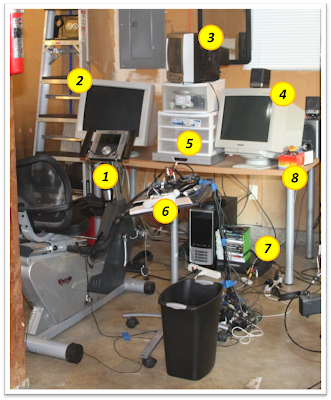October 30, 2013
Moving My Blog
July 24, 2013
Maybe I'm Amazingly Angsty
...and why I can't just sit back and enjoy an amazing McCartney show.
Disclaimer: I'm about to crank the blowhard factor up pretty high. That is, when I talk about anything remotely emotional, I feel like a total blowhard trying to be deep, because I'm actually "Die Hard" deep on a good day, not even "Gladiator" deep. Is it more or less blowhard-y if I announce it first? In any case...
Seeing McCartney live is an emotionally confusing experience for me. Last Friday was show #6 for me. I can't say whether one show was better or worse than another, because, as per Paul's reputation, every show is flawless. He'll stop touring when he starts missing notes. The only mistake I've ever heard him make was forgetting the lyrics to You Never Give Me Your Money... on purpose, at every show on the tour, which encapsulates everything good and bad about his reputation as a perfectionist. The Seattle show was far and away the "biggest" show I've seen him do, so it goes down as my #1: it was the first show ever at Safeco, so there were actual fireworks (not just stage pyrotechnics), the living members of Nirvana reunited on stage (Seattle's favorite musical child helping to open the doors to our new largest concert venue), and it was definitely the hardest-rocking of the shows I've seen. And the weather was spectacular: a little sun for the earlier, lighter part of the show, then lights-and-explosions-in-the-dark for the *pounding* encores. Almost like he drew it up that way... Paul can afford to rent weather, right? There was plenty of Yesterday, but overall this was a rock show. "Special treats" that I hadn't heard before included Another Day, Ob-La-Di, and - most surprisingly - Mr. Kite. But highlights have not changed for me in six shows: down the line, it's Maybe I'm Amazed and Live and Let Die. I'm so fired up at the end of Live and Let Die that I literally have to fight the urge to run circles around the stadium (which would risk significant personal injury, and more importantly would have caused me to miss Hey Jude).
Here comes the blowhard-y part. For some reason, seeing (or sometimes even reading about) McCartney makes me marvel, usually not in an entirely happy way, at how much this person who is nominally from the same species as me has seen and accomplished in his life. He probably wrote 50 of the 1000 greatest songs of the recorded music era, played on another 50, and has met/toured-with/jammed-with everyone who recorded the other 900. For my money, he's *easily* the most "complete" musician of the 20th century; I have him down as the greatest songwriter, but any way you spin it he's in the top 50 as a songwriter, singer, multi-instrumentalist, live performer, and studio genius, and I can't put anyone else in the top 50 in all those categories. Beyond that, he's met presidents and prime ministers, played in front of possibly *billions* of eyes, and he's raised seven gazillion dollars for charity (not an exact figure, but if a gazillion were a real number, no matter what number it was, this would be a low estimate).
So all of that comes down somewhere between awe and self-pity for me. Some combination of (a) being or approaching "middle-aged" and (b) starting with moderate-at-best self-esteem, it's somewhat hard to just sit there and appreciate all that is McCartney without thinking "he does twelve things better than I do any one thing".
But that's maybe 30% of why I feel oddly conflicted at what should be a purely upbeat experience, or usually the day after. The other 70% has more to do with the fact that every show starts with grainy black and white clips of the Beatles in the studio, John and Paul hovering over a piano somewhere, the Beatles meeting x and y and z, the Beatles slowly growing up. If these are supposed to strike an emotional note with the audience, it works. Paul is 71 now, and has watched nearly all the other geniuses with whom he created modern music pass away, and no matter how much scrutiny has gone into documenting the Beatles' every step, he's the only one now who knows what was really happening when all those clips were captured, and the only one who knows what it felt like to be at the pinnacle of creativity that was Lennon/McCartney. The good and the bad of it: the moments of inspiration, and the telling each other to fuck-off-I'll-record-it-myself, all of which were part of the magic that we might never see again. In fact, the odds have it way against us seeing that magic again in my lifetime (I'm a computer scientist, so I have the authority to make up probabilities). And there's definitely a little hint of "holy crap, mortality and what not" and "even Paul can't take it with him" that factors in.
I know there are lots of "people who have done a lot of stuff and been around a while", but for some reason I don't get this strange wispy feeling when I think about what Henry Kissinger has seen and accomplished, or Bill Gates, or Dan Rather, or any living or non-living dignitaries or geniuses. This *only* happens with McCartney. It's not that I'm the biggest Beatles fan in the universe. I'm not. I probably know the words to 60% of the Beatles discography. I don't remember Beatles birthdays or who Ringo's wife is or how many kids Paul has or what guitar George played on Your Mother Should Know (also a surprise treat at this concert, BTW). Maybe it was being introduced to the Beatles at a formative place when I was just starting to play music (the first song my high school band played was Day Tripper... also a surprise treat at this concert, BTW). Or maybe I'm less angsty than I think, and there's no secret trigger in my past, and all 45,000 people at Safeco felt the same thing.
But to conclude my blowhardiness, I'll thank Paul for another spectacular show, for a reason to start picking up my guitar more often (the awe outweighs the self-pity, when push comes to shove, and I dug in yesterday for a good long round with this), and - though he didn't cook it himself - for the awesome veggie dog I ate before the show (that was just to make sure I concluded with something not-very-serious and more in keeping with my use of social media).
Here's the best review I found of the show. Good review, but why isn't he more angst-ridden?
Read more...May 16, 2013
My Vegan Week in Paris
...and why in 10 years, Paris will be the destination for vegan cuisine.
I recently traveled to Paris for a week. The trip was 50% work, 50% vacation, and 100% vegan. I turns out, after extensive research, that French people really like butter and cheese. So I won’t say that Paris is exactly the optimal place for vegan dining. With that said, I enjoyed a fantastic week of food, and will argue in this post that if right now Paris is like a C- as a vegan cuisine hotspot (compared, say, to New York, or any city on the West Coast of the U.S., which are all A+’s), all signs point to Paris becoming the destination for vegan food in the next decade or so. I’ll start with a bit on why Paris is currently a bit vegan-challenged, then talk about my hypothesis that this is going to change, then will talk about my week there and all the restaurants I visited.
Why Paris is Not — Right Now — A Vegan Paradise
To be clear: Paris has perfectly good produce, and you could get a salad anywhere full of fresh green lettuce (if you ask for no cheese, and then remind them that no cheese includes crumbled cheese, and also ask for no dressing). But anywhere in this post, when I say “food”, assume I mean “food with actual calories and preferably some protein”. Contrary to popular perception, vegans are not ruminants, cannot survive on kale, and in fact don’t eat more lettuce or spinach than anyone else does. I eat ~3000 calories a day and I don’t like lettuce. So the fact that every brasserie in Paris can provide salad is not bad, but is essentially a no-op.
So when I compare to the U.S. cities I was born in (New York) and/or live in (Seattle), here are a few reasons Paris is barely functional for vegan dining in 2013:
- Even “bread for breakfast” is complicated. Bakeries in Paris play the breakfast role that DnD and Starbucks play in the U.S., and in the U.S. there are always bagels, most of which at this point are vegan (though not all; bagel vegan-ness is complicated and outside the scope of this discussion). In the U.S., If there aren’t bagels, there’s a wheat bread something something that still feels like food. Not so much in Parisian bakeries. Croissants are of course the standard breakfast fare, and other than at the hippie vegan places, there are not vegan croissants available. Crepes play a similar role (fast, non-gross carbs), but are also not vegan-friendly, and even the nominally-vegan gallettes (which contain neither milk nor egg) are often difficult to order vegan because they’re cooked on a buttered pan, without an available substitute.
- One cannot bank on Asian food. In the U.S., basically every Chinese or Thai restaurant has tofu... in fact they want you to eat their tofu because it’s cheaper for them than meat. Asian food is much less common in Paris than in major U.S. cities, and tofu is actually not a given. Maybe a third of Asian restaurants I peeked into had tofu on the menu, I figure maybe half had tofu on the premises. Sushi places on the U.S. West Coast also have a near-universal menu of vegetarian and vegan options, e.g. inari and avocado rolls. I didn’t see inari anywhere in maybe 10 Japanese/sushi places in Paris. And if maybe 50% of soup/noodle/Pho places or dishes in the U.S. use a meat broth, it appeared to be about 90% in Paris. What all this means in practice is that in a group scenario, the blanket approval of Asian restaurants breaks down.
- Other ethnic food is not uncommon, but is less distributed. If you walk any block in Manhattan, you’ll see a steakhouse next to a Thai place next to a Middle Eastern place next to a pizza place next to a Starbucks. It’s not that there are no non-French restaurants in Paris, but that most neighborhoods are all French restaurants (which actually mystifies me a little... every block seems like 10 brasseries in a row with the same menu). So if you’re wandering with friends and you’re not in the Middle Eastern neighborhood, count on a low probability of falafel. And, as per the general theme here, count on a low probability of non-animal protein. On the flip side, there are several neighborhoods chock-full-o-falafel.
- One cannot bank on chain food. In the U.S., I know that if I’m in a rush and it’s time for breakfast... Starbucks, Dunkin’ Donuts, and Panera have bagels. If it’s lunch... Subway has a veggie patty, McDonald’s and Burger King have veggie burgers (which are no more or less disgusting than their meat products), and Chipotle and Baja Fresh have awesome black bean burritos. Bottom line: chains have functional, non-animal-based food. Not so in France. Chains are generally less common (certainly part of the appeal of Paris for “food tourism”), and none of the chains have the vegan-friendly products they carry in the U.S. (Starbucks, for example, doesn’t have bagels).
- Substitution is not part of the culture. “Can I get x with y instead of z, with the q on the side?” is a standard request in the U.S., vegan-ness aside. In the U.S., other than at the fanciest restaurants, places and servers generally want the customer to have what they want and — within reason — are not offended by substitutions. Maybe this is one of the few upsides of our out-of-control tipping system, which doesn’t exist in Europe. You probably won’t get glared at if you request substitutions in Paris, but you’ll get a confused look, and your request will likely involve a lengthy exchange with the kitchen that ultimately results in less clarity on what you’re actually eating. It’s just not a thing.
Bottom line: don’t plan to walk outside with a group and say “we’ll find something on this block” unless you aren’t particularly hungry. I was mostly in Paris for a conference, so there were plenty of people around and I never had to leave my wife to fend for herself. In fact once I settled in and said “this is going to be an adventure and I look forward to traveling to a new (pre-selected) place for every meal”, I had a blast, and saw several neighborhoods I wouldn’t have seen if I could have counted on eating near my hotel.
Why Vegans Will Be Flocking to Paris in 10 Years
Although Paris doesn’t compare favorably to most U.S. cities for vegan dining right now... you heard it here first... I predict Paris will be the place for vegan dining a decade from now. I personally have no tofu in this fight (i.e., I have no trips planned to Paris and may or may not ever be in Paris again), so I wouldn’t call this “optimism”. Rather, a few clear trends point to a real rise in vegan dining in Paris:
- French people love animals. Europe in general, and Paris in particular, has a wildly dog-friendly culture. Can you imagine bringing your dog into a restaurant in Manhattan? Unless you're an A-lister eating a restaurant you partially own, not so much. In Paris, every park is a dog park. Dogs are off-leash all the time (and consequently dogs are well-behaved all the time). Overall, French people display a clear empathy for animals that is above and beyond the mean empathy for animals in the U.S. This does not tip the scales toward vegetarianism overnight, but it helps. Empathy for cows isn’t the same as empathy for dogs, but it’s a little further down the same emotional axis.
- French people love the environment. We definitely hear a lot of trash-talk about American environmental habits coming from Europe (and France in particular), and I admit to having assumed this was just a case of “it’s easy to hate cars when everything is close together so you don’t need cars”. But I have to say that the sense of environmental activism in Paris was palpable, everywhere in the city. The public transit system is incredible compared to even the best subways in the U.S., and is constantly growing. The main city parks and gardens (e.g. the Tuileries) are maintained with organic supplies and no pesticides. Just like in all of our stereotypes, cars are tiny, motorcyles are tinier (and ubiquitous), and consequently gas mileage is off the charts. Overall: I was wrong, France, your environmentalism is quite sincere. And again, though this doesn’t turn anyone into a vegetarian, it puts a cap on how large the meat industry can grow, and is likely to make the population much more responsive to the argument that reducing meat intake (without giving up meat) can contribute to environmental protection just like reducing oil consumption (without giving up cars). So I could absolutely imagine a “meatless Monday” (or perhaps “sans viande samedi”) becoming a cultural tradition, which would open the door for meatless menu options and increase enthusiasm for meatless restaurants.
- Paris is full of hippies. Paris has to have more artists and college students per capita than any European city, particularly in the summer. And where there are artists and college students, there are hippies. And where there are hippies, there are vegetarians. And where there are vegetarians, there are vegetarians who need to eat. You see where I’m going with this.
- Natural and organic food is exploding in Paris. Grocery stores in Paris tend to be smaller than American supermarkets. Consequently grocery stores can turn over a little faster than in most of the U.S., and it was very clear that in the ~2 years before I visited, an astonishing number of crunchy natural grocery stores had opened up, including large and expanding chains like Naturalia and Bio C’Bon, as well as a number of smaller local markets. Natural and organic is not equivalent to vegetarian-friendly, but in practice, every one of these places carried tofu, soy milk, and all sorts of meat substitutes, comparable to what a Whole Foods would carry in the U.S. (despite being so much smaller). This points to both a growing market and a growing distribution channel for non-animal protein and a general open-ness to a change in food culture.
- Everyone speaks English in Paris. Being comfortable as a traveling vegan or vegetarian largely hinges on being able to communicate with proprieters and servers. And often a phrasebook falls short here (aside from being an annoyance), because asking questions like “is the pan greased with butter?” or “can you make the pad thai without fish sauce?” is a challenge if you’re operating one-noun-at-a-time. So certainly for Americans, the fact that basically everyone in Paris who works at a restaurant, hotel, or grocery store speaks excellent English provides a ton of comfort and clarity on what one is eating. This has nothing to do with French people wanting to eat vegetarian food, but this list is about why Paris is may be on the rise for vegan tourists.
- Paris is good at food tourism. Last but not least, people travel to Paris in part for the food, a fact in which the city takes great pride. If there is a city where vegan/vegetarian travelers are going to be willing to travel a few extra blocks to say “I ate at this fantastic restaurant in this neighborhood that sounds super-European”, it’s Paris. If there is an opportunity to expand food tourism — and the claim that Paris is the culinary capital of the world — to a growing population of vegetarian and vegan travelers, entrepreneurial Parisians are going to figure out how to capitalize.
So overall, I’m not claiming that Paris is going to turn vegetarian, or that 90% of restaurants are going to have vegan options. But I do think that a mild cultural shift will occur that allows, say, 50% of restaurants to have vegan options (maybe around what you’d find in New York, for example), and that this will be enough to make Paris a destination — if not the destination — for vegan dining.
Last But Not Least, My Week in Paris
So that’s all great for the vegan visiting Paris in 10 years... what about right now? In fact I had a jolly time sampling vegan food in Paris, and — as I mentioned above — the fact that I had to plan each meal and travel to eat turned out to be a positive: I saw parts of the city I might not otherwise have seen, and probably had more variety than I would have had I dined at the majority of restaurants, which are pretty consistently “French food”. Here are a few highlights:
 |
Gentle Gourmet Café (Metro: Bastille) Seasonal, small menu of French-ish vegan cuisine. Atmosphere fancier than the price would suggest (which is generally a positive, though actually it felt a little too quiet and "nice" for my taste). Friendly, quick service. Nice location right across from the quay. Most importantly, this was the only place I ate at twice, which is putting my... mouth where my mouth is. My first visit was for lunch, where I spent about €16 for an excellent portobella burger, fries, bread, salad, and coffee. I went back because while in Paris, I wanted to get my croissant on, and this was the only place I came across advertising vegan croissants, so I went back for breakfast. I was not a vegan for 30+ years, so I’ve had my share of croissants. This was on par with the best croissant I’ve ever had. And it was vegan! On the flaky/dry side, which is exactly how I like pastry. Mmmmm. I had two. |
 |
Grand Appetit (Metro: Bastille) I had lunch here, and spent €6.6 (which BTW is less than a coffee in Paris) for an excellent plate of vegan sushi w/tofu. Vegan sushi is easier said than done in Paris: the standard vegan options that are always available in the U.S. (e.g. inari) aren’t standard fare here. But this is not a sushi place, it’s a cool, menu-on-a-chalkboard café that serves interesting food, a variety of cereals, and takes pride in tea. And I always love when a super-hippie place is run by someone who doesn’t look the part; the dude looked straight out of Fiddler on the Roof. Very friendly, spoke English, took credit card. |
 |
M.O.B. (Metro: Filles du Calvaire) This is an American import; they also have a location in Brooklyn. It’s a hip vegan burger place, somewhere between health food and fast food. I spent about €7 for a large plate with a veggie burger and fries. The place had character, the service was friendly, and I liked the vibe of the one giant communal table. But that’s the good news... this was probably the worst meal I had in Paris. As I mentioned above, I’m sort of down on vegan places that don’t serve a lot of protein, because I can get perfectly good bread and vegetables anywhere. From the very small menu, I picked the veggie burger, which was super-soggy, and definitely a relative of the Garden Burger family of veggie burgers (i.e., no protein). The fries were really heavy. And I don’t think I just ordered the wrong thing; the was quite limited, though some of the vegan desserts looked appealing. Overall, not a must-visit. |
 |
My Kitch’n (Metro: Brochant) Ate dinner here. The menu of the day had just two plates and two smoothies on it (and vegan carrot cake). Very cool “hippie home cooking” vibe. I had a couscous curry/bean bowl; it was great. Very casual dining in a lively market. I almost missed the place; the address I had was the address of the market, which itself is quite hidden from the side of the street I was on. But I’m glad I wandered a little to be sure before giving up. This is definitely the closest to the “restaurant”/“just a counter” border on my list, but there are tables, and the service was friendly, so I’m calling it a restaurant. |
 |
East Side Burgers (Metro: Saint Ambroise) Ate lunch here. Fast food vegetarian/vegan burger/dog/fries place. A certain “fast food is cool” charm, and the fries were good. Service was friendly. Looks like a burger stand (in a good way) upstairs, but downstairs seating area nice. Burger was not good. Like super not good. Greasy, runny yellow cheese substitute. Generic, pasty white bun. Lots of unnecessary paper and wrapping for a dine-in. Cool menu of vegan desserts that I didn’t try. |
 |
Sol Semilla (Metro: Jacques Bonsergent) This was easily the hippiest place I ate at in Paris. More like modern Orange County hippie, less like ‘60s grunge hippie. All into supplements and wheat germ and what not. That was neither good nor bad. What matters is that the food was excellent; I had a hippie noodle-y thing, a hippie smoothie thing with some kind of grass in it, some raw chocolate beans, and an awesome hippie vegan chocolate dessert. Servers were very helpful in helping us sort out what everything was; even if the menu had been in English, I had no idea what all their wild superfood hippie supplements were. Seriously, be ready for a dose of that... it was sort of like “Janis Joplin meets GNC”. Strikes against the place: more expensive than other places I ate. Not expensive by the standards of “going out to dinner and eating meat”, but more expensive than any other place on this list. I spent about €25 (just for me) and left a little hungry. Also, though I’m totally cool with the half-grocery-store-half-restaurant vibe, there were people literally standing around our table who neither worked at the restaurant nor were customers. Just people coming and going and passing packages to the proprietors, or waiting for people to come in and out of the kitchen, or smoking outside the door (while holding the door open). I’m not sure what the deal was, but it was a strange vibe. I got the sense it was very typical. But my food *tasted* fantastic, and I can’t say the vibe wasn’t unique. And given how much other folks recommend this place, I would put it on a “visit if you’re sampling vegan food in Paris” list. |
Quick Thanks
First thanks to all the people I stole all the pictures from on the Web; I’m too lazy to carry a camera. Second, thanks to the three sites I used when I was planning where I would eat in Paris: happycow.net, a blog entry on the Hungry Hungry Hippie blog, and veganparis.com.
Read more...March 25, 2013
Exercising-While-Gaming is the Future of Exergaming
...and how you can get seriously fit while shooting zombies in the head.
Why “Exergaming” Is Broken
Is this any more plausible than any of the 2am infomercial novelty fitness gadgets? I have both an “Ab Roller” and an “Iron Arms”. They’re both a little silly, but both are way more useful, at $7, than the Wii Fit. Seriously. Why are we BS’ing ourselves about this?
Why Exer-and-Gaming is the New Exergaming
Building Your Exer-Cave
- A recumbent exercise bike.
IMO the recumbent bike is key, since you can work out at full steam, on the order of 1000 calories an hour (we’re not f’ing around here and taking a leisurely stroll, we’re working out), and still keep your upper body sufficiently still to play games. I am personally unable to do this on an upright bike or an elliptical, etc., at least not at maximum exertion. Ergo I’m partial to the recumbent bike. If you’re new to the gaming workout, get a bike on Craig’s List and spend as little as possible. I.e., don’t convince yourself that you need to drop $1000 on fitness equipment, since you won’t, and we’re done before we get started if the exer-cave costs more than a gym membership. A good rule is “buy shitty, and when you break the pedals off, it’s time to upgrade”. I’m not kidding, you’ll physically break the frame of a $50 Craig’s List bike pretty quickly if you get serious, but IMO that’s the way to start, and then you’ll be in a better position to invest carefully in a more serious bike. - A crappy monitor
...on which to play video games. Keeping cost down here is also key, since if you require a 55” plasma TV and a construction crew when you’re building your exer-cave, you won’t really get around to it. CRT monitors are all but free now. In fact if you live anywhere with a lively Craig’s List, they’re literally free. - A crappy TV (this one is 15” and was also free)
...on which to watch TV, either when something awesome is on that is itself a sufficient distraction (read: football) or when you want the double-distraction-power of TV and video games at the same time. - An additional crappy monitor
...just in case. Sometimes I use this for streaming video while I’m also playing games. At the very least, it makes me feel more like I’m sitting at mission control. I mean, crappy monitors or not, that’s a whole lot of monitor-age in that picture. Folks who are Netflix-inclined will find the additional crappy monitor extra-useful. - A DVR
...for the non-Netflix-inclined and/or the heavily ESPN-inclined. Mine is filled with enough football to get me from Saturday through about Wednesday, when I may have to fill one exercise session with an episode of House before football starts up again on Thursday. - “Central command station”
This is where I keep audio stuff and game controllers, within easy reach of the bike. More on this later. If you (a) don’t have kids (and thus can put the TV at whatever volume you want even at night) and (b) aren’t using a PC at all (so you don’t need a keyboard), just put your remote control and your XBOX controller near your bike and you’re fine. - Games, and devices on which to play them
A computer that is sufficiently badass to play all but the most modern games now costs about $150 on Craig’s List. An XBOX 360 costs about $100 on eBay. Either by itself lifetime of gaming. I used to use the PC but haven’t touched it since I discovered XBOX (about 7 years after the rest of the world discovered XBOX). IMO the PC is not necessary unless it’s your DVR. XBOX basically has you covered for your while-you-exercise game console. It turns out that if you’re not playing games for six hours a day, a game lasts a long time. If you never buy a game, and just play free trial games on XBOX Live, you can never spend another dollar on games and be good to go for life. Or you can spend $10 once a month on a used game. Either way, game selection is an important part of getting the exer-cave right. More on games later. - Five-hour energy
Caffeine planning is a critical part of exercise IMO. I typically only hit the 5HE before daytime workouts, usually on the weekend, which lets me push a little harder, and maybe do 1500 calories in a day instead of 1000. During the week it’s just a cup of tea because I’m working out at night. Do what works for you, but no matter what you think about caffeine, if it’s the difference between pushing through a little early-workout lethargy and not exercising at all, it’s good for you (provided you protect your sleep). This whole post, remember, starts from the supposition that we don’t intrinsically like exercising and can admit to needing some digital and/or chemical support.
Thoughts on Exercise-Friendly Games
Thoughts on Routines and Schedules
Thoughts on Fitness Outside the Exer-Cave
- A small audio mixer(this is a Behringer XENYX 502)
...probably $35 new or $20 on Craig’s List. Audio feeds come in from the cable box, the PC, and the XBOX (and I leave a little 1/8” connector hanging out for my iPod). The mixer lets me send them all into my headphones. Being able to pan left and right is also useful for certain workout scenarios… most notably when using workout DVDs (I went through a P90x kick), you can put the DVD on the “cues only” track, pan it to one side, and pan other content (podcast, TV, etc.) to the opposite side, and they really don’t get in the way in your head. Because it turns out that Tony Horton is really funny the first time, but by the second week I totally needed something else going on while I was working out. - DI Box:
If you find that running audio from your XBOX/PC and your cable box into the mixer produces a meaningless, horrible buzz, it’s probably because your cable box (like mine) is not properly grounded. No problem; I stuck a DI box with a ground lift switch in between the cable box and the mixer, and all is fixed. Probably $10 in extra cost, since the crappiest DI box on Earth works fine for this purpose. - Gamepad connected to the PC
If you like wireless controllers, make sure the charger(s) is right next to the bike also. IMO it’s key to have everything in one place; having to get up to find/charge/put away the game controller breaks the flow and damages the “I’m not exercising or doing anything that’s a pain in the ass, I’m just playing video games” mentality. - A tiny keyboard with a built-in touchpad
This is one of the old Motion Computing keyboards that I found on Craig’s List for $5. You can’t really type while riding a bike (believe me, I’ve tried), so the goal is just to have something very compact for occasional button-clicking (to start a game or a Netflix movie or whatever). A big keyboard and/or a mouse quickly makes this too unwieldy even for small operations. - Bluetooth headphones
...paired to a Bluetooth transmitter that’s connected to the output of the mixer (the transmitter is just a little dongle that take a regular headphone input and sends the audio out over Bluetooth). $25 for the transmitter and headphones together as of the time I’m making this post (at Overstock). This was a key innovation in my distraction maximization: I don’t have uncomfortable headphones dangling from my head, and I can ride the bike, get water, stretch, lift, whatever, without ever leaving the awesome world of my football or other audio entertainment. I strongly recommend buying cheap here too. You can spend $100 on Bluetooth headphones, but there’s pretty much consensus that they all wear out due to sweat eventually, and in my experience the $25 last at least as long as the fancy ones. And that’s $25 with transmitter. The only downside of the cheap setup is that it won’t work at 200 feet away, but that’s not the point here. - XBOX controller
See (3) re: keeping the charger right next to you as well. Every extra step you insert between you and video games makes exercise that much closer to being a chore again.
March 20, 2013
Some Bass Tones You Hear Sometimes
...a guided tour.
The great Duff McKagan once said something like “a bass player is doing his job when two different pieces of music sound different, and the audience knows it but really can’t explain it.” That largely sums up the fantastic anonymity of the bass, to all but bass players and prog fans. In fact the vast majority of music lovers have probably only noticed a song’s bass line just a few times, and have likely never thought about bass tone, which bassists of course spend many hours and many dollars crafting so they can — quietly and anonymously — influence the whole vibe of a song.
The main goal of this post is to give folks a a sense for the variety of bass sounds that permeate popular music, by presenting and discussing snippets of songs you probably already know. I’ve tried to choose clips where the bass is clearly audible, but in some cases you’ll have to work a little to really catch on to what the bass sounds like. Tip of the day: you don’t need fancy speakers to listen carefully to electric bass, but if you’re listening on a phone or tablet without headphones, save yourself a few minutes and stop reading now... electric bass is typically entirely inaudible on tablets and phones.
And I’m organizing the sounds I’ll discuss by putting them into a few categories (seven, to be exact). Of course, I understand it’s ridiculous to try to put all bass sounds in the universe into categorical buckets. Within the huge space of “electric bass for popular music”, I’ve tried to pick examples that highlight some of the canonical tones. In reality 99% of recorded bass is going to be somewhere in between the categories I lay out here. In engineering terms, I’m trying to lay out a basis for bass sound hear every day. A basis is a set of examples that describe some larger space, where everything in the larger space can be represented as a combination of the examples. So I’m not claiming that every bass sound I hear on the radio falls into one of these categories, but hopefully most can be described as somewhere in betwen these categories. Let’s call it a bassis (hahaha that was f’ing clever, no?). Also I’m only commenting on music I encounter in my rock/pop life; I have nothing at all to say about jazz or show tune bass. And even within my world, I’m focusing mostly on electric bass, and largely excluding synthesized bass, though I’ll include a few sampled/synthesized examples because sampled bass makes up such an important chunk of popular music (nearly everything in modern hip-hop and R&B).
And as best I can stick to this promise, this is not going to be “Dan’s top ten most awesome favoritest bass sounds”, though I’ll make no effort to hide my opinions. In fact, it turned out that there was a logical ordering of common bass tones moving roughly from my least favorites to my favorites, so that’s about what you’ll get. So with that said, crank it up, and let’s get started with a list of the basic tones that I’m going to discuss.
The Sounds of Boom:
A Rough Breakdown of Bass Tones in My Slice of the Rock/Pop Universe
| What I Call It | Some Examples I’ll Use |
|---|---|
| The Rumble | Kanye West, T.I., Notorious B.I.G. |
| Overdriven Rock | The Ramones, Green Day, The Sex Pistols, Skid Row, Guns n’ Roses, The Cure |
| Bright Jazzy Rock | Yes, Rush |
| Tight Metal | Megadeth, more Megadeth |
| Classic Thumping P | Parliament Funkadelic, Dr. Dre (via sampling) |
| Vintage Smooth | The Supremes, Queen, Led Zeppelin |
| Modern Drive | Jason Mraz, Gretchen wilson, Miranda Lambert |
Tone #1: The Rumble
I promised I’d start with bass sounds that I’m not really into... rumble is the bass you “feel but don’t hear”. Or often, if you can hear it, you can’t quite tell where notes start and stop. Lots of bass, no attack. In frequency terms, this means basically everything in the bass is below 100Hz, without the attack of a finger or pick that usually clocks in at a few hundred Hz.
Some rumbly songs, like the Kanye West track I excerpt below, just sound rumbly all the time (this is a particularly awesome example, since - although I swear I didn’t notice at the time I picked it - the lyrics start with “make the ground move, that’s an ass-quake”). But other rumbly songs sound like the bass fades in and out. Often it’s not really coming and going, it’s just dipping so low that you can’t hear it (but it can still shake the earth and make your ears hurt). The T.I. song I use as an example below has this property, at least to my ears. At around 6 seconds into the clip, it seems to get quieter in the bass, then around 10 seconds pop back in for one note, then out again. This is one of the only times in writing this post that I fired up a spectrum analyzer to confirm what I was hearing: in fact when it gets “quiet”, it’s just dropping down to a low rumbly E, the same volume as the low rumbly B (a little higher) that you hear at the beginning of the clip and at 10 seconds. Same with the Rihanna clip, always loud in the bass if you look at the spectrum, but it sounds like it’s coming and going.
Lest anyone think this is just and old guy complaining about how today’s hip-hop wants to rock your neighborhood, I also included a Notorious B.I.G. clip from 1994 that’s also pretty rumbly; this has been the sound of much of hip-hop for a couple decades. I’ll list an exception below, in the “Thumping P” category, a hip-hop track from around the same time with a much clearer bass sound. And in fact, even in this B.I.G. clip that I’d definitely call “rumbly”, the bass is much quieter compared to the rest of the track than most modern hip-hop, and makes my ears much less sore.
Overall, the rumble is not my thing, and I’m excited to move on to the next set of examples. My ears are tired.
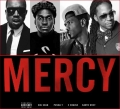 |
Mercy.1 (2012) (slightly NSFW) Bass: Synthesized What I Call It: Rumble |
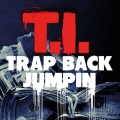 |
Trap Back Jumpin (2012) Bass: Synthesized What I Call It: Rumble |
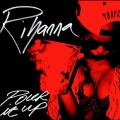 |
Pour it Up (2013) Bass: Synthesized What I Call It: Rumble |
 |
Gimme the Loot (1994) Bass: Synthesized What I Call It: Rumble |
Tone #2: Overdriven Rock
Part of punk was about being loud, and sounding even louder than you were. That meant the beginning of a trend where bass would get a little brighter (i.e., more high-frequency content) than it had been in the ’50s and ’60s. Brighter tones came via a pick (the ’70s saw a huge increase in picked bass), via the replacement of flatwound string with roundwound strings (which are brighter), and with allowing the bass to distort a little, even if not quite at distorted-guitar levels. There’s definitely brighter bass out there than punk and hard rock bass, and we’ll get there a little later, but compared to earlier recordings, bass was definitely cutting through the mix more when punk arrived.
In general, I agree with the notion that “tone is in the fingers”, and a great bassist will sound like him/herself on any reasonable collection of gear. With that said, the sound of punk bass - and much of the hard rock that was inspired by punk - almost always lands on a particular combination of gear: a Fender Precision Bass (i.e., “Fender P”), played with a pick, into an Ampeg SVT, with some overdrive. This is such a canonical combination that numerous articles have been written about its ubiquity, including this fantastic overview at Premier Guitar, from which I grabbed a few of these examples.
I’m going to list these examples chronologically; the earliest are the true punk inspiration for this tone (The Ramones and The Sex Pistols). These two bass lines will be some of the toughest on this post to pick out for folks who have never listened to a bass before, because punk bass was usually played right along with the guitar, and because the recordings in general were gritty by today’s stanadrds. I think it’s fair to say that much of ’80s and ’90s hard rock bass was heavily inspired by punk bass, even if the gear changed a little. So to my ears these all fall pretty sensibly into one cluster of tones. Heavy and gritty, bright enough to cut through, but still with bass filling out the bottom. “Fascination Street” and “Sober” are probably the most controversial examples, but to me they’re punk-caliber gritty.
This is still on the list of “tones I don’t really like”. In fact the only artist here I’m a big fan of is GnR, and I was never into Duff’s bass tone.
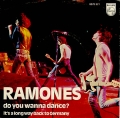 |
Do You Wanna Dance (1977) Bass: Dee Dee Ramone, picked Fender P into Ampeg SVT What I Call It: Overdriven Rock |
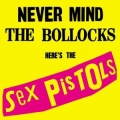 |
God Save The Queen (1977) Bass: likely Steve Jones, likely picked P into an Ampeg SVT (source) What I Call It: Overdriven Rock |
 |
Rocket Queen (1987) Bass: Duff McKagan, picked Fender Jazz, likely GK head and cab What I Call It: Overdriven Rock |
 |
Piece of Me (1989) Bass: Rachel Bolan, likely Fender P What I Call It: Overdriven Rock |
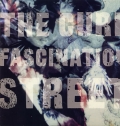 |
Fascination Street (1989) Bass: Simon Gallup, gear unknown What I Call It: Overdriven Rock |
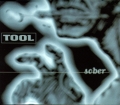 |
Sober (1993) Bass: Paul D’Amour, Rick 4001, likely picked into Mesa head/cabs What I Call It: Overdriven Rock |
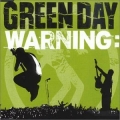 |
Warning (2000) Bass: Mike Dirnt, picked Fender P, likely Mesa head and cab What I Call It: Overdriven Rock |
Tone #3: Bright Jazzy Rock
While punk was exploding in volume and energy, prog was exploding in clarity and precision, and the prog scene in the ’70s saw the bass playing a much more lead-instrument role, particularly in trios that didn’t have a mountain of guitars to fill things up. The technical nature (and often the speed) of prog, much like metal (which I’ll get to below), also required a brighter tone and tighter attack from the bass, so everything would feel more completely in sync with guitar and drums. So the group of bass sounds I call “bright jazzy rock” is basically Rush, Rush, more Rush, and everything inspired by rush. But here you’ll hear the bass cutting very clearly through the mix, often as distorted as a lead guitar. Geddy Lee exemplified this distorted tone, and he probably had the tightest attack of any bass player who ever played with his fingers. It’s crazy how picked his bass sounds at times, all the tight attack and mid-range honk that usually means “pick”. In “Limelight”, your first thought might be that you’re hearing the guitar, but no, that’s him blasting away on the bass.
This is also the first category of bass tones that makes up a big chunk of answers you’d get if you asked a room full of bass players “what’s your favorite bass tone?”. In fact, I did that (the room was virtual, but the principle applies), and Chris Squire and Geddy Lee led the list. For me... still not my thing. With that said, there’s no doubt that Chris Squire and Geddy Lee are two of the greatest bass players of the electric-instrument era, or that they’ve inspired million of prog-tone-seekers to buy Rickenbacker 4001’s or Fender J’s (the canonical instruments of the genre).
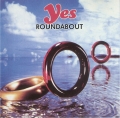 |
Roundabout (1971) Bass: Chris Squire, Picked Rickenbacker 4001 or RM1999 What I Call It: Bright Jazzy Rock |
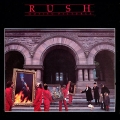 |
Limelight (1981) Bass: Geddy Lee, likely a Rickenbacker 4001, possibly Fender J What I Call It: Bright Jazzy Rock |
 |
Tom Sawyer (1981) Bass: Geddy Lee, likely Rick 4001, possibly Fender J (Rick in this studio video) What I Call It: Bright Jazzy Rock |
 |
The Spirit of Radio (1980) Bass: Geddy Lee, likely a Rickenbacker 4001 What I Call It: Bright Jazzy Rock |
Tone #4: Tight Metal
When metal really became metal (I don’t call anything in the ’70s “metal”), the speed of the guitars and the kick drum needed a bass sound that could keep up, which made for almost ubiquitous use of a pick, and usually basses and amps with brighter tones than the P-Bass’s of the ’70s. Gallien Kruger, Hartke, Jackson, and EMG became the sounds of “heavy metal”, and still are today. Another aspect of metal bass - even more than in punk - was tight synchronization between the guitars, the kick drum, and the bass, such that they were almost one instrument. This makes the bass hard to pick out at times for novice ears, especially in early metal with less clarity in the recordings.
Dave Ellefson (from Megadeth) summarizes this really nicely in this interview at Music Radar:
“I find that playing with and around the guitar riff has allowed me to have my biggest impact as a bass player. It’s also a big reason why I mostly play with a pick, because I can be very articulate and precise in how I perform my lines and make them crisp and clear – the way the guitars sound” ... “When you’re playing metal, you don’t want to do anything that deviates from the riff. The riff is king in metal music. If you ask me, it should be king in all music, but especially in metal. In fact, there are times when all of the stringed instruments in the band should be playing nothing but the riff.”
I loves me some Megadeth and some Dave Ellefson, so I’ve used a couple of informative Megadeth examples here. In “Holy Wars”, six seconds into the clip, the bass enters, doubling the guitar an octave down, so you can hear the riff with and without the bass here. The drums play the riff as well, so this a canonical example of the typical metal riff arrangement. In “Countdown to Extinction” (which is more modern and a little more “pop”; I’d actually put a little more in the “hard rock” tone), the bass starts high and bright, but drops an octave when the vocals come in (at 15 seconds in this clip), for a slightly more typical metal tone, then when the guitars come in at 30 seconds (right before I stop the clip), you get an even more typical metal mix, with the bass playing deep but with a sharp attack.
“Peace Sells” is much more like an ’80s hard rock song, and I couldn’t really separate this from the “overdriven rock” examples above (e.g. Rocket Queen, Piece of Me), which illustrates the slightly-arbitrary divisions I’m making here, which are partially about tone but partially about arrangement. All information on the Interwebz suggests that Ellefson is playing exactly the same equipment on “Peace Sells” that he does on “Holy Wars”, which to me sounds super-metal.
.jpg) |
Holy Wars... The Punishment Due (1990) Bass: Dave Ellefson, likely picked B.C. Rich Mockingbird, likely GK head, Hartke cabs What I Call It: Tight Metal |
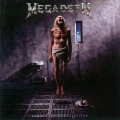 |
Countdown to Extinction (1992) Bass: Dave Ellefson, likely picked Jackson w/active EMG’s, likely GK head, Hartke cabs What I Call It: Tight Metal |
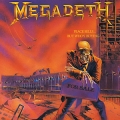 |
Peace Sells (1986) Bass: Dave Ellefson, likely picked B.C. Rich Mockingbird, likely GK head, Hartke cabs What I Call It: Tight Metal |
Tone #5: Classic Thumping P
Finally, we arrive at the slice of the bass world that makes me want to play bass, which I’ll split over the next three categories. First we get the classic funk sound of the ’70s, which is much less bright than anything in my “overdriven rock”, “bright jazzy rock”, or “tight metal” categories. No distortion + no pick + darker-sounding equipment == none of the sizzly high-end we’ve heard through those categories. But at the other end, funk bass has almost the same requirements for precision that prog does, so the rumbly-rumbleness of the “rumble” category would be a disaster here as well. So typically we get about as sharp and clear an attack as fingerpicking will allow, without the sub-sub-sub-bass frequencies that would come later with hip-hop. Mmmmmm.
The Fender P is canonical here as well, though neither of my examples involve a P (although consensus is that the second song was played on a Fender Tele Bass that was briefly manufactured with single-coil pickups, with flats, so as close to a P-Bass as one could get without the word “Precision” on the headstock). The genre is likely a mix of flatwound and roundwound strings (as I mentioned earlier, all the hard-rock tones are played on roundwounds, which are brighter, and are almost ubiquitous today).
One of the more satisfying moments of putting this post together was my discovery of the origins of “Nuthin’ But a G Thang”, which I assume that everyone who was cooler than me in high school probably already knows, but I didn’t. This song is sampled from Leon Haywood’s “I Want’a Do Something Freaky To You” (1975), though in this case “sampled” understates things a little; basically the entire track other than the vocals is replicated. When I came across this looking through ’90s hip-hop, looking for “rumble” examples, I thought “this is incredibly not-rumbly, and totally sounds somewhere between funk and motown.”
Turns out Haywood’s bassist, according to the Interwebs, was Wilton Felder, who traveled in the soul, funk, and jazz scenes, but is known best for his work on Motown records, notably “I Want You Back”, which might well be my favorite bass part that isn’t included on this post. This was cosmic reassurance that I’m not just making shit up. I put this in the more funk-like category because the attack is somewhat heavier (i.e., the bass line is more percussive and thump-y) than most of what’s in my “vintage smooth” category (e.g. most of Motown bass), but it’s a close call.
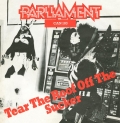 |
Give Up the Funk (Tear the Roof off the Sucker) (1976) Bass: Bootsy Collins, crazy custom space bass What I Call It: Classic Thumping P |
 |
Nuthin’ But a ‘G’ Thang (1992) (bass 1975) Bass: Wilton Felder, reportedly single-coil Fender tele bass with flats, direct What I Call It: Classic Thumping P |
Tone #6: Vintage Smooth
Though I’m making a somewhat arbitrary distinction here, the not-too-much-treble, not-too-much-bass sound of the “thumping P” category takes another form when the attack gets calmed down a little, so the sound is less percussive, and notes are allowed to sustain a little longer. This is what I’ve labeled the “vintage smooth” category, and here we arrive at my undisputed all-time favorite bass sounds. “Keep Me Hangin’ On” would be the most borderline here, with a sound almost as percussive as the more funk-oriented sounds I highlighted above, but definitely the attack is toned down a little here. Toning down the attack even a little more, and adding just a little more bass and a tiny bit of overdrive (without making things any brighter) takes us to “Killer Queen”, probably my favorite bass recording ever. Both of these sounds are P-bass + flatwounds. Turns out P-basses are awesome.
But many folks would say that if you made up any category of bass tones called “vintage smooth”, it would be hard not to make John Paul Jones (of Led Zeppelin) the centerpiece of that category. JPJ’s bass sounds are often very melodic and at times are even the lead instrument (as I’d say is the case in the clip below from “Ramble On”, but never overdriven, and never in your face. I.e., it always sounds like a bass, and the attack is always pretty gentle. Debate ragse on the Interwebs about whether he used flatwound or roundwound strings, since he was recording right around the time that most of the world was discovering roundwounds. Consensus (based largely on his own very cryptic discussions of the topic in interviews) is that he played rounds, but he (and his engineers) made rounds sound more like flats than anyone ever has.
.jpg) |
You Keep Me Hangin’ On (1966) Bass: James Jamerson, Fender P with flats straight into tube DI What I Call It: Vintage Smooth |
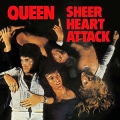 |
Killer Queen (1974) Bass: John Deacon, ‘63 Fender P, likely flats, into Ampeg SVT heads and cabs and H&K heads and cabs source What I Call It: Vintage Smooth |
 |
Ramble On (1969) Bass: John Paul Jones, likely a 1961 Fender Jazz Bass, debate rages on rounds vs. flats What I Call It: Vintage Smooth |
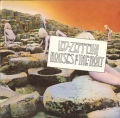 |
The Song Remains the Same (1973) Bass: John Paul Jones, likely a 1961 Fender Jazz Bass, debate rages on rounds vs. flats What I Call It: Vintage Smooth |
Tone #7: Modern Drive
Lest I give the impression that I don’t like any bass sounds recorded more recently than 1976, my last category is one that’s basically ubiquitious in modern country recordings, and a good amount of modern pop. Compared to the previous category, this turns up the low mids (without turning up the low bass that adds rumble) and adds quite a bit of drive and compression, giving a nice stable bottom that to me evokes a low cello sound. I’ll use a couple examples from country songs, but this sound is truly everywhere in country bass, which is mostly recorded by a relatively small number of session bassists who are awesome at cranking this sound out. For variety, I’m also tossing in Jason Mraz’s “I’m Yours”, a recording that I think sounds great across the board, and uses a similar bass sound in a very different musical context.
 |
Gunpower & Lead (2007) Bass: Glenn Worf, gear unknown, but every image I could find shows him with a P What I Call It: Modern Drive |
 |
Redneck Woman (2004) Bass: Unknown What I Call It: Modern Drive |
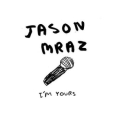 |
I’m Yours (2008) Bass: Martin Terefe, gear unknown What I Call It: Modern Drive |
Conclusion, and a Word On Fair Use
That wraps up today’s tour through a few bass sounds; hopefully I’ve given non-bassists an idea of how bass tones vary, and hopefully I’ve given bassists a reason to mail me in an uproar about the labels I’ve used.
All of the clips used on this page are used under the premise of Fair Use, as material subjected to commentary and analysis. I’ve kept clips to 30 seconds. If you’re a copyright owner and you object to anything I’ve used on this page, please mail me and I’ll remove it ASAP.
Sound clips played via SoundManager 2.
Read more...





